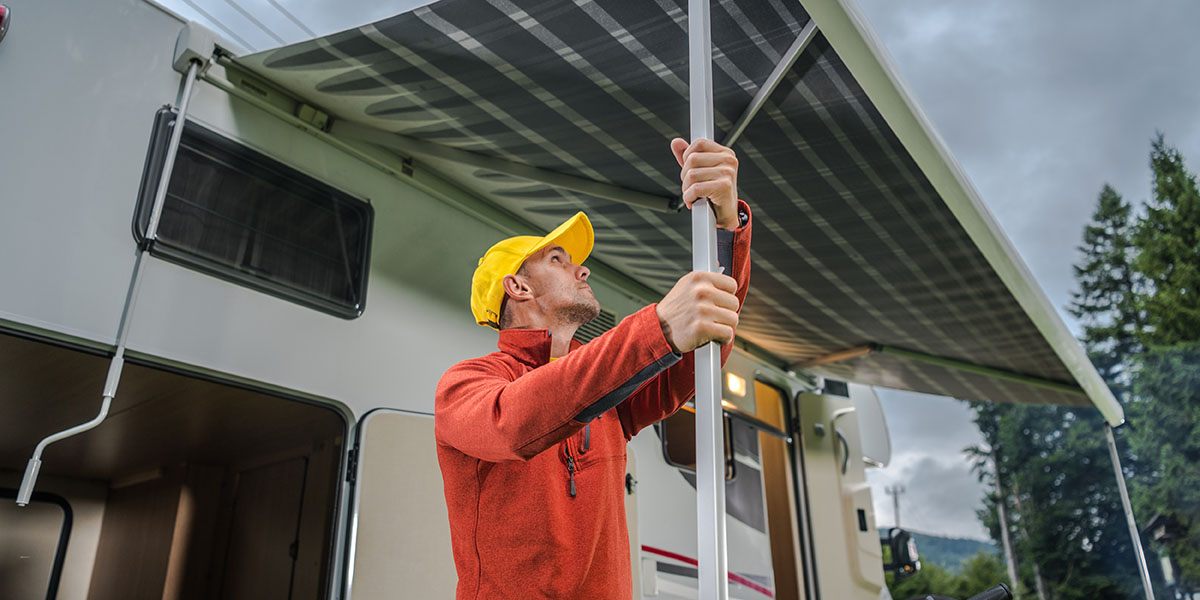The fact is that the sun — bright orange ball that it is — can sneak up on us. We head outdoors and enjoy the sunny the weather with easy nonchalance. But for your RV, those ultraviolet (UV) rays aren’t just sunny — they can punish different components over time. So, plussing up your RV with UV protection is crucial for extending its lifespan. (In addition to maintaining its aesthetic appeal.)
Fact is, UV radiation is no joke. And an RV that neglects UV protection can ultimately expect damage to its exterior paint, roof, and interior furnishings. However, by understanding these risks, RV owners can easily boost their UV protection with some pretty simple preventive measures.
So, let’s name them. The following are nine ways to help you safeguard your investment from the menace of the sun.
The Danger of UV Rays for Your RV
Ultraviolet rays are a type of electromagnetic radiation emitted by the sun. They are categorized into three types: UVA, UVB, and UVC. While UVC rays are absorbed by the Earth’s atmosphere and do not reach the surface, UVA and UVB rays can have detrimental effects on materials, including those used in RV construction. UVA rays penetrate deep into materials and can cause fading and degradation over time. UVB rays, while less prevalent, are responsible for sunburn and can also damage surfaces.
Both types of UV rays can lead to the deterioration of your RV’s exterior and interior, resulting in costly repairs and a diminished appearance. Some common indicators to recognize the signs of UV damage would be the following.
Signs of UV Damage
- Fading Paint. The vibrant colors of your RV may start to fade, leading to a dull appearance.
- Cracked Surfaces. The exterior materials, including fiberglass and vinyl, may develop cracks or become brittle.
- Deteriorated Seals. UV exposure can weaken the seals around windows and doors, leading to leaks.
How to Protect Your RV from UV Rays
1. Use UV-resistant materials.
When investing in an RV, choose a model that uses UV-resistant materials. Many manufacturers now incorporate materials designed to withstand UV exposure. If you’re planning to customize or repair your RV, look for fabrics, paints, and coatings that specifically state UV resistance.
2. Regularly wash and wax your rig.
Keeping your RV clean is essential for protecting it from UV rays. Dirt and grime can trap moisture and lead to mold and mildew, which can exacerbate UV damage. Regularly wash your RV using a mild detergent and water. After cleaning, apply a high-quality wax designed for RVs. Wax acts as a barrier against UV rays and helps to protect the paint.
3. Use UV-blocking covers.
When your RV is parked, especially for extended periods, consider using a UV-blocking cover. These covers are designed to shield your RV from direct sunlight. That prevents the UV rays from causing damage. Choose a cover that fits well and is made from breathable material to prevent moisture buildup underneath.
4. Park your RV in the shade.
Whenever possible, park your RV in shaded areas. (You already knew that, right?) Trees, awnings, and other structures can provide natural protection against UV rays. If you’re at a campground, look for sites with ample shade. If shade is not available, consider using portable sunshades or canopies to create a shaded space for your RV.
5. Install window tinting.
Window tinting can significantly reduce UV exposure inside your RV. Applying a UV-blocking film to your windows helps protect your interior furnishings and occupants from harmful rays. This goes beyond preserving the appearance of your RV. It also keeps the interior cooler and enhances comfort during hot weather.
6. Make use of awnings and sunshades.
Awnings are a great addition to any RV. They provide shade and reduce direct sunlight exposure. Ensure your awning is made from UV-resistant fabric. Additionally, consider using side panels or sunshades that can be attached to the awning for extra protection.
7. Keep regular with your inspections and maintenance.
Conduct regular inspections of your RV to identify any signs of UV damage. Check for fading, cracking, or deterioration in the exterior materials and seals. Addressing these issues promptly can prevent further damage. (That way, you can avoid costly repairs.) Regular maintenance forever remains essential for the longevity of your RV. It includes resealing joints and applying protective coatings.
8. Store your RV properly.
If you plan to store your RV for an extended period (like all winter), choose a location that minimizes UV exposure. Ideally, store your RV in a garage or covered storage facility. If that’s not possible, use high-quality covers. Also, ensure that all windows and vents remain closed to protect against UV rays and potential weather damage.
9. Apply a protective coating.
There are various protective coatings available that can be applied to your RV’s exterior to provide an extra layer of UV protection. These coatings can help prevent fading, cracking, and weathering by forming a barrier against the sun’s rays. Always follow the manufacturer’s instructions for application for the best results.
Defend Your RV with UV Protection
Understanding UV exposure is key to protecting your RV. Familiarize yourself with the UV index, which indicates the strength of UV radiation on a particular day. On days with high UV indexes, take extra precautions by minimizing exposure and ensuring your RV is adequately protected.
Remember, just like other maintenance tasks, protecting your RV from UV rays is an essential part of maintaining its value and ensuring a pleasant camping experience. By understanding the risks associated with UV exposure and implementing proactive measures, you can significantly extend the lifespan of your RV. Regular maintenance, use of protective materials, and proper storage practices will help keep your RV looking great and functioning well for many adventures to come. Remember, a little effort in protecting your RV today can save you time and money in repairs tomorrow. Enjoy your travels knowing your RV is well-protected against the sun’s harmful rays!

Leave a Reply